Lasagna and our green beans for supper last night.
Attended the WH Film Festival showing about CRISPR–Cas9 genome editing technology.
No rain this morning; disappointing.
Ron is off for a fasting blood test.
Lasagna and our green beans for supper last night.
Attended the WH Film Festival showing about CRISPR–Cas9 genome editing technology.
No rain this morning; disappointing.
Ron is off for a fasting blood test.
I drove James to work yesterday and Robert today. We drove Robert home on Monday so we could give him his birthday card and a Cumby gift card.
Third hot, humid day.
I got to the Pantry yesterday and since they had no baked goods, picked up bagels at Panera (Tuesday special) and two loaves of bread at Stop & Shop. Introduced myself to Nathaniel; nice to meet him at last!
Ron helped me put coolant in the truck yesterday. The reservoir was almost empty.
Peter’s car is at Midas. I picked up spices and marked-down treats at Job Lot beforehand. Timing was about perfect, got to Midas as he was finishing up.
Started watering at 7 this morning. Washed the truck; Ron is working on the van now.
We left Friday around 11 am and got to Jaffrey around 3 or so.
Betsy had a full afternoon and evening planned, and I believe she tried to introduce us to half the state of New Hampshire.

We visited their Thorndike Beach Club, attended a Project Shakespeare reading and reception and then the Amos Forum lecture with yet another reception.
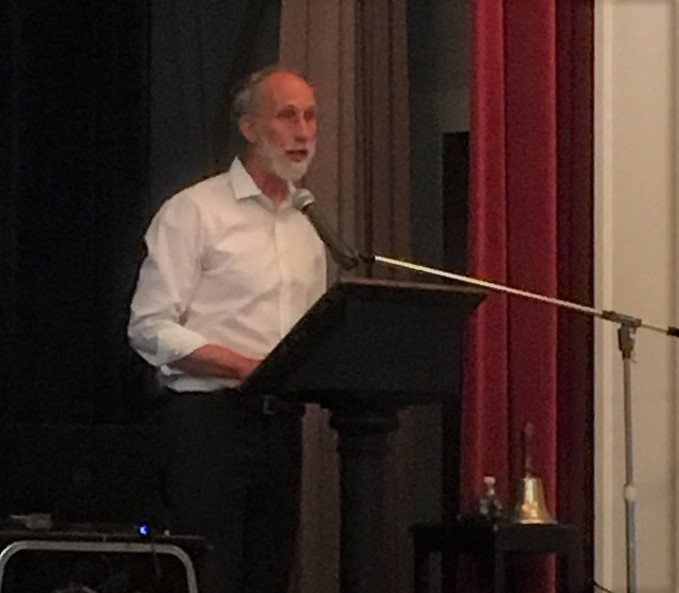
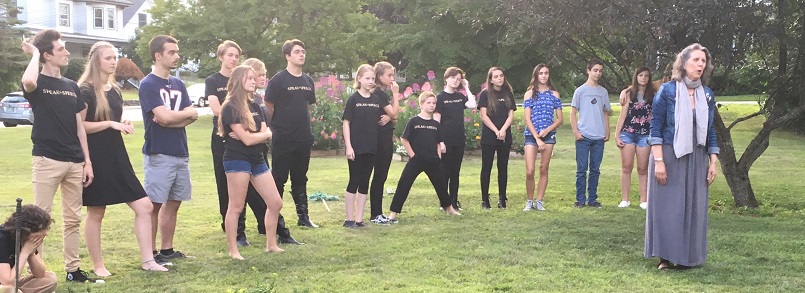



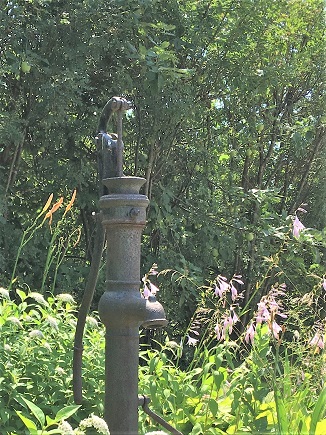
By the fourth “Meet and Greet”, I was worn out and the first to leave. Easy walk down the hill to their house.
Next day, after pancakes, we went to the thrift shop at the transfer station and the Jaffrey River Fest, where we caught up with Jenda and the grands. At some point, David drove us back to the house via a gorgeous scenic route. Later, he and Ron took a spin around a pond they like.
Sunday morning, we visited Charles and Jenda’s garden and were on the road by 11:30 or thereabouts. We stopped at White’s so Ron could set his GPS and for corn.
Ron wanted to see his cousin in Natick, so we got off Route 2 and took 126 through Concord. Nice ride.
We made it home in plenty of time to unpack and go to the last day of the Fair, where we enjoyed the craft exhibits.
Peter had done a great job watering the potted plants; everything is fine.




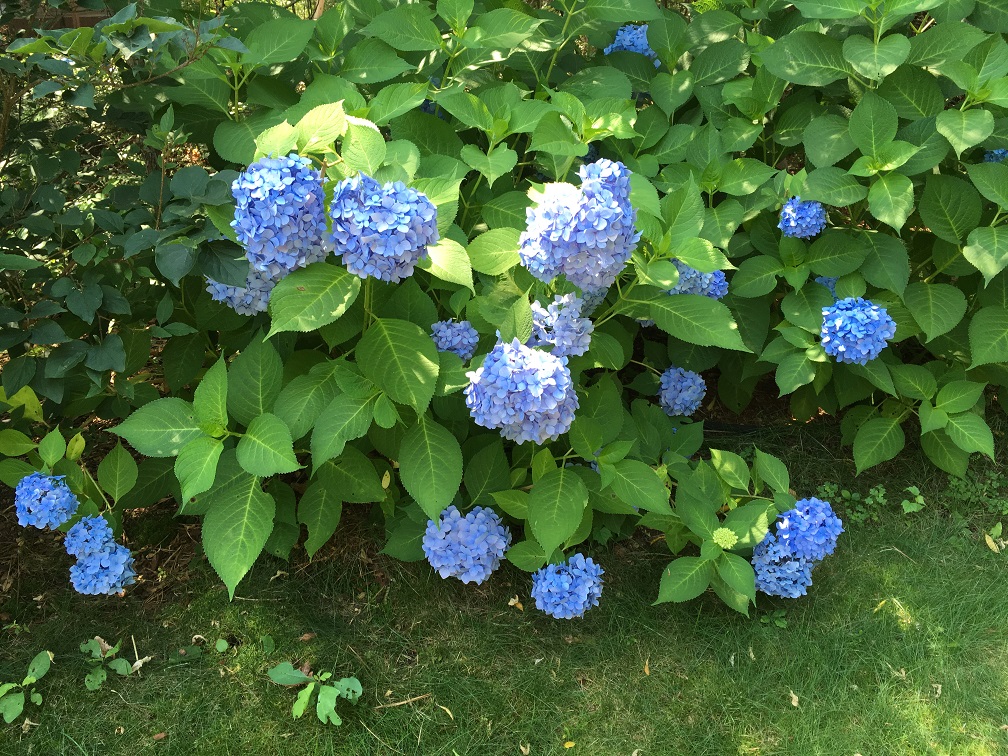
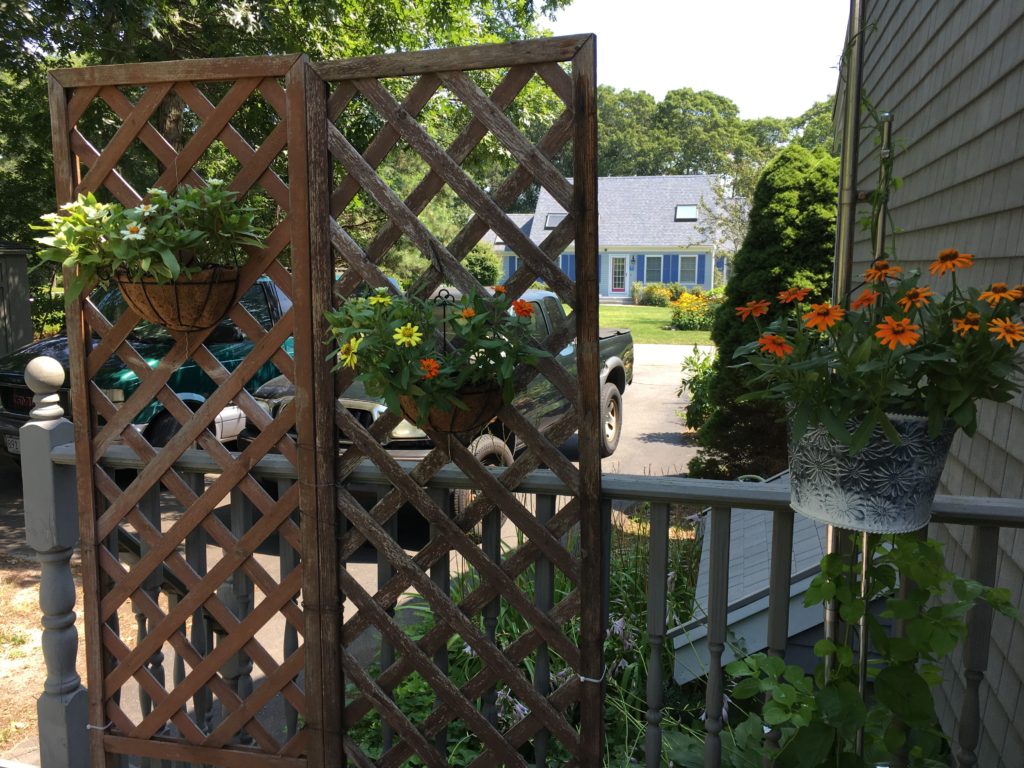

Betsy is in charge of her church “White Elephant” table. She gave us a set of cordial glasses which she’d planned to donate. We’re enchanted with the colors, so I put them on the kitchen window sill rather than hiding them in a cupboard or cabinet.
Today, I’m working on laundry and photos. Ron is out.
Just got back from a very good planning session for the MRTC’s “meet and greet” next month.
Ron finished up the shower today!
I did laundry.
We washed the truck and the van. It took a good hour because of the oak tree junk from the storm earlier this week.
Harvested a nice bunch of green beans.
Ron got the second shower wall rejoined to the door frame; added posts; and positioned it into a brace. Good afternoon’s work.
I did the transfer station run. Big this week, Peter thinks we punted last week.
Made corn bread to serve with the chili from the other day. Trying to get by with on-hands, so used coconut milk so Ron could have cow’s milk with his cereal. Came out GREAT!
Working on adding d3.js to WordPress.
Watched the morning Mueller hearing with the House Judiciary hearing. Missed most of the afternoon hearing with House Intelligence, unfortunately.
James is taking driving lessons.
No. All day, I thought it was Saturday, but it’s Tuesday.
Made mac and cheese and a bean meatloaf which I overcooked in the little toaster oven. I think it will be good as hash with eggs, though.
Gave Robert a ride home. Picked up a couple of reserved items at the library.
Intense storm until about 1 pm. We missed the worse; there were tornado touchdowns in Harwich Center and South Yarmouth.
“The singular, unavoidable truth about adoption is that it requires the undoing of one family so that another one can come into being. And because of this, it is a practice, an institution, and a mode of family-making that is born of and begets trauma, loss, and grief. The fairy tale narrative of adoption denies adoptees the acknowledgement and support necessary to process their experiences across a lifetime. It delegitimizes the trauma of adoption loss and directly and indirectly influences the overwhelming statistics that show us adoptees are far more likely than the general population to struggle with trauma-related mental illness, suicide, and addiction.
“By ignoring the complex reality of adoption, we are also corroborating a sentimental narrative that drives a billion-dollar, for-profit adoption industry whose sole purpose has been successfully shifted in modern American history from finding homes for children who legitimately need them, to supplying hopeful prospective parents with kids to call their own. The fairy tale narrative of adoption uncomplicates these truths and it lets us off the hook. It makes us feel good about each other and ourselves without having to face difficult complexities and integrate them into our understanding of not only what it means to be adopted, but also what it means to be human.
“Inside the fairy tale, we don’t have to think about the darkness, the underbelly, or the unspeakable grief lying just below the surface of a child who has been severed from their home and family of origin. We don’t have to think about the countless pregnant people in the United States and across the globe who have been tricked, bribed, forced, and coerced into relinquishing their children or whose children are kidnapped and sold to agencies or intermediaries who stand to profit from their adoptions. Inside the fairy tale, we don’t have to think about all the first mothers and first families who would choose to keep their children or whose children might not have been unnecessarily or unjustly taken from them if they had access to the right kinds of support. The kinds of support that could be provided countless times over, both in the US and abroad, with the money currently invested in keeping the for-profit adoption industry and the child welfare industry in business.
“…It is here—in everyday encounters, in saccharine and reductive media representations, and even in our adoptive families—where adoptees are expected to embody the fairy tale narrative of adoption. A hopeful, well-intentioned narrative, but one that is historically steeped in white saviorhood and colonialism. One in which people with more financial resources, social capital, and most often racial privilege, feel entitled to the children of those with less privilege, opportunity, and support. And we have accepted this not only as an unquestionable good, but also as the best possible outcome.
“But what exactly is being measured when weighing this out? Are we certain a child will be “better off” living with the irreparable wound of parental separation and more financial resources than with a low-income or working class parent in their family of origin? Certainly socioeconomic status is often a clear indicator of one’s opportunities in life, but what’s the trade off? I have often wondered what our lives would have looked like had my mother and father made the decision to strike out on their own and raise me. And I wonder too how much of our future might have been determined by the biases that are alive in these very same assumptions. Am I better off? Am I lucky? The truth is, we will never know. And this, too, is a loss.
“Adoption loss is an ambiguous loss. While it changes shape over time, it is often life-long. It is without end. I have lost my entire family and yet, there are no bodies to bury, no socially acceptable ritual or process meant for me to understand this loss and how to live with it. My mother went on living, became someone else’s mother, while I lived my young life with only the presence of her absence and the fracturing unknown. Maybe she’s alive; maybe she’s dead. Maybe she loves me; maybe she has forgotten me. Maybe anything.
“Even after reunion, if it is possible or desired, there are new losses, new lives, and new selves to grieve. Loss of this magnitude and with this kind of ambiguity most often does not simply resolve itself. Adoptees must learn how to live with it over time, yet we must do so in the face of society insisting we exude joy, gratitude, and luck. An insistence that often means the kind of support we need to manage our grief is either nonexistent or unavailable to us. Imagine for a moment, if we treated other losses this way. Imagine losing a loved one—tragically, unexpectedly—and then being expected to behave as though it was the best thing that ever happened to you.
“We need a new adoption narrative. We need to ask ourselves why we have historically needed to perpetuate the sentimental fairy tale narrative of adoption that only serves to hurt those at the center of it and to support an industry in dire need of reconstruction. We need a narrative that can celebrate love and family-making, but which does not insist that adoption is always the best option. That in fact, it is often unnecessary and the most generous, altruistic thing we can possibly do is to help prevent another child and first family from having to live with a lifetime of loss and grief. We need a narrative that centers the voices of adopted people and can hold the complexity of our multiple and fractured truths. That can hold all of it. Because I think this is the reality of being adopted—holding these seemingly contradictory, disparate, complicated truths, in the same body, always. Holding deep grief and profound joy in the same breath. Holding love for one mother that does not negate the love for another mother. Belonging partly to one family or country or culture, partly to another, but maybe never feeling as though we belong to either. Feeling both wanted and unwanted, both chosen and abandoned. Wanting to belong here and wanting to go back there.
“What if we, as a society, chose to hold all these truths at the same time, at the same pitch, without the need to push one out in favor of the other? How might our questions or actions or beliefs about adoption change? How might our ideas about loss change? About healing? About family?”
Media Myths and Adoption FallaciesMade entrees and sides from on-hands: macaroni with basil, garlic, toasted pine nuts and ranch dressing; chili; Greek style tortellini salad.
Even with eating carbs, Ron and I have lost weight.
We took the brush to the transfer station.
I mowed the front and side lawn.
The most successful vegetable varieties for succession planting include: arugula, basil, beans, beets, broccoli raab, carrots, cilantro, dill, green onions, kale, kohlrabi, lettuce, bok choi, radish, spinach, swiss chard and turnips.
This could be the hottest weekend of the Summer.
We did okay yesterday. Ron finally gave up on working outside, and I was in an air conditioned truck for a couple of hours, driving the lads to and from work.
Stopped to attend the open house for the big house on the ridge. They are asking for a ridiculous amount of money, more than double what a similar house next door sold for a couple of years ago.
After dropping James off today, I stopped by a fellow gardener’s home in Barnstable. Her yard is almost completely filled with daylilies, and I wanted to pick up some reds for Peter’s garden.

She sold me a gorgeous clump for much less than I’d pay at any nursery.
Being a Cape Cod gardener (good soil is precious), she gave them to me bare rooted, so I decided on the way back to swing by and plant them before the tenants get back.
Ron finished the laundry. We made the bed and put clothes away. I did some watering, mostly the potted plants but also tomatoes, and the Kousa and hibiscus transplants.
On my way to pick up James, I dropped off a tarp for the SPEA workers, who did a phenomenal job cleaning up the area around the bulletin board. James helped me get it in the truck. I watered the new daylilies again.
Veg burgers, homemade coleslaw and fresh corn for supper.